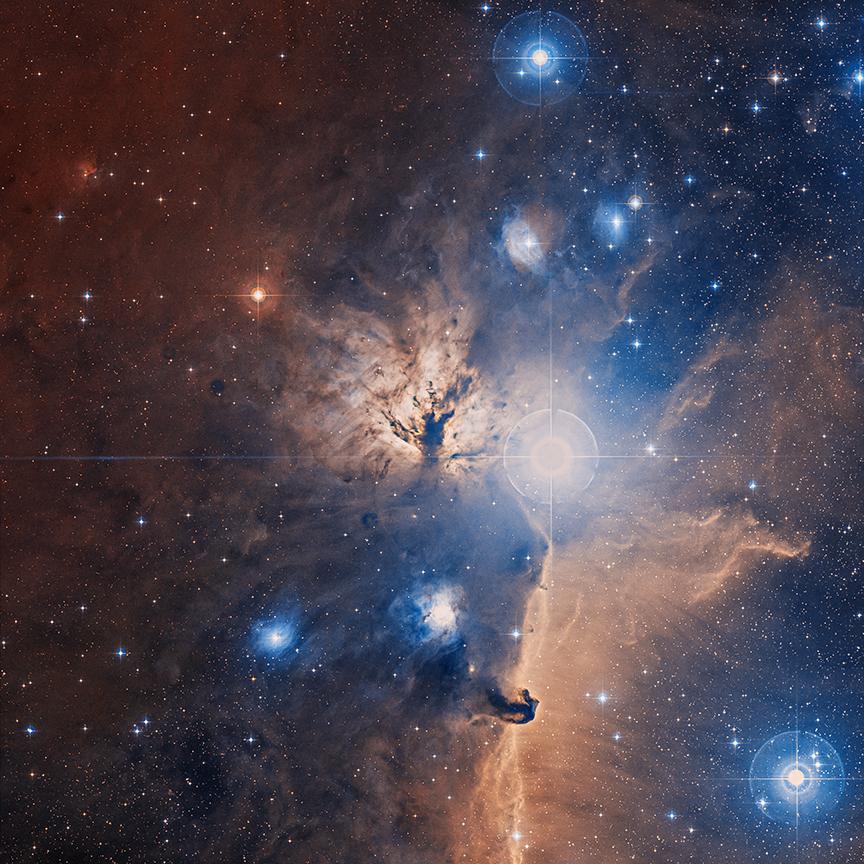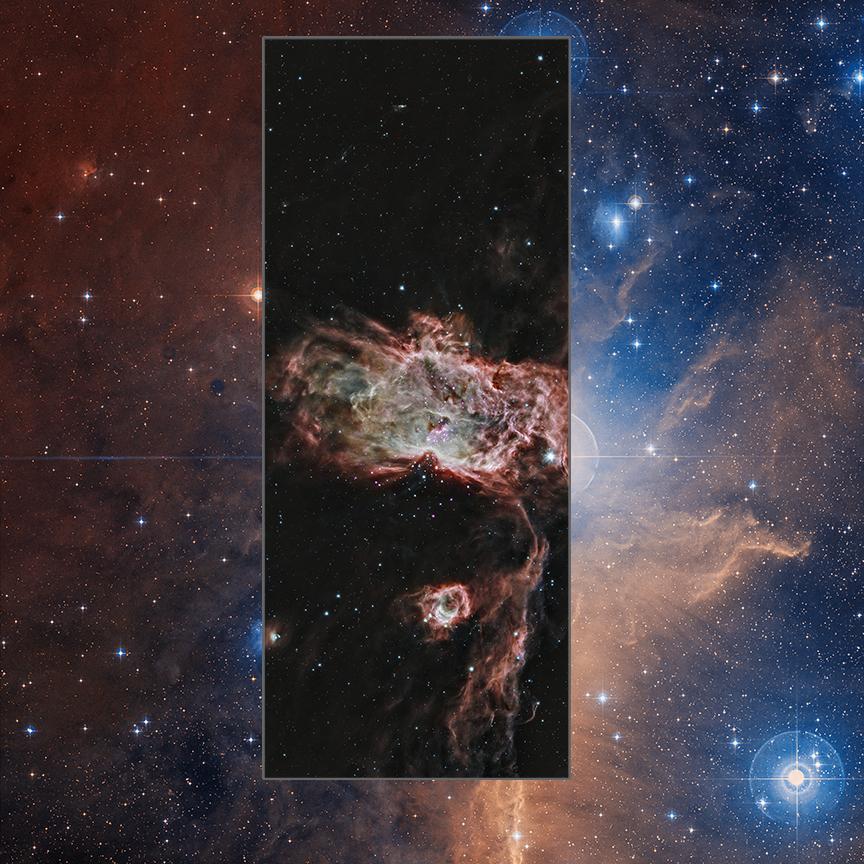Лента новостей → Рентгенография туманности Пламя
На этом великолепном снимке в оптическом диапазоне выделяется туманность Пламя (a.k.a. NGC 2024), которая окружена плотными газопылевыми облаками, являющимися регионами активного звёздообразования. Не упустите возможности лицезреть её в «рентгене».

Благодаря снимкам в рентгеновском и инфракрасном диапазонах, полученных соответственно космическими телескопами Чандра и Спитцер, у нас появилась возможность преодолеть преграду из ионизованного газа и плотных слоёв космической пыли и заглянуть внутрь NGC 2024.

Супер-инфракрасно-рентгеновский-слой простирается на 15 световых лет, проходя через центр Пламени и раскрывая множество недавно сформировавшихся звёзд возрастом от 200 000 до 1,5 млн. лет. Всё это великолепие разворачивается на расстоянии 1400 световых лет от Земли в направлении Пояса Ориона.
На фото также заметна известная туманность Конская голова, которая вместе с туманностью Пламя и ещё несколькими объектами входят в состав обширного облака Ориона.
Права на изображения: Optical: DSS; Infrared: NASA/JPL-Caltech; X-ray: NASA/CXC/PSU/ K.Getman, E.Feigelson, M.Kuhn & the MYStIX team. По мотивам APOD
